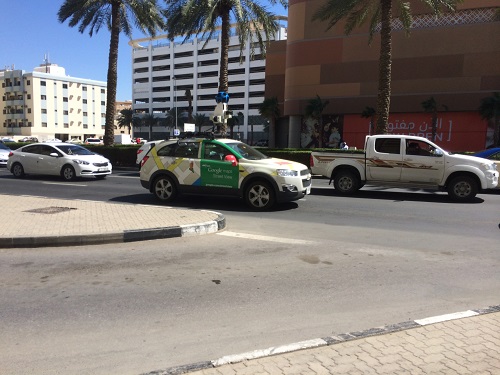Dubai is naturally famous for its high-performance cars – particularly when they’re being driven by the police. But turning heads on Sheikh Zayed Road in recent months has been an altogether more humble Chevrolet SUV. Or more accurately, it’s the camera protruding from its roof that has been grabbing the attention. For Google are in town, in the process of making Dubai the first Middle East city to be mapped using its groundbreaking Street View service.
For the uninitiated, in 2007 Google Maps rolled out Street View in the United States, taking the way cities are visualised to a whole new level. No longer are they explored through lines on a map, or via a static satellite picture. Google’s 360-degree cameras recorded New York, San Francisco, Las Vegas, Miami and Denver as living, breathing entities populated with both people and buildings, which, when uploaded to the existing Google Maps app, allowed the user to walk streets at pedestrian level as if they were on the pavements themselves.
The man who designed and still runs Street View, Luc Vincent, says that the original idea was to provide a “useful” and “compelling” service. Sounds simplistic, but then Google Street View has always had a common sense element: it’s much easier to navigate around a city if you have visual clues in front of you.
And while most people began using Street View by looking up their own house as it rolled out across the world, it quickly had other benefits. Prospective property purchasers could explore the area in which they were considering moving to, rather than just look at the house itself on an estate agent’s website. Holidaymakers could see just how close the main road was to their hotel or restaurant. And the curious could simply sit back and become armchair travellers.
Increasingly, indeed, Street View has forged a more entertaining role. In the last months there has been a craze for superimposing classic album covers and paintings onto Google Street View, so you can see Abbey Road by The Beatles then and now, or Canaletto’s famous scenes of Venice. With Google putting its Street View technology onto trikes and trolleys as well as cars, it’s also possible to virtually walk around famous art galleries such as The Tate, Uffizi and Metropolitan Museum of Art and look at the masterpieces without having to peer over somebody else’s shoulder. Or, in fact, stroll around Everest’s base-camp without ever having to travel thousands of miles across the globe.
It looks, as you might expect, cold. But the fact that it is possible to explore Everest – or, already, the 151st floor of the Burj Khalifa – instead of flicking through static pictures sums up Google Street View’s capabilities. Nothing quite matches actually being there, but this comes closer.


